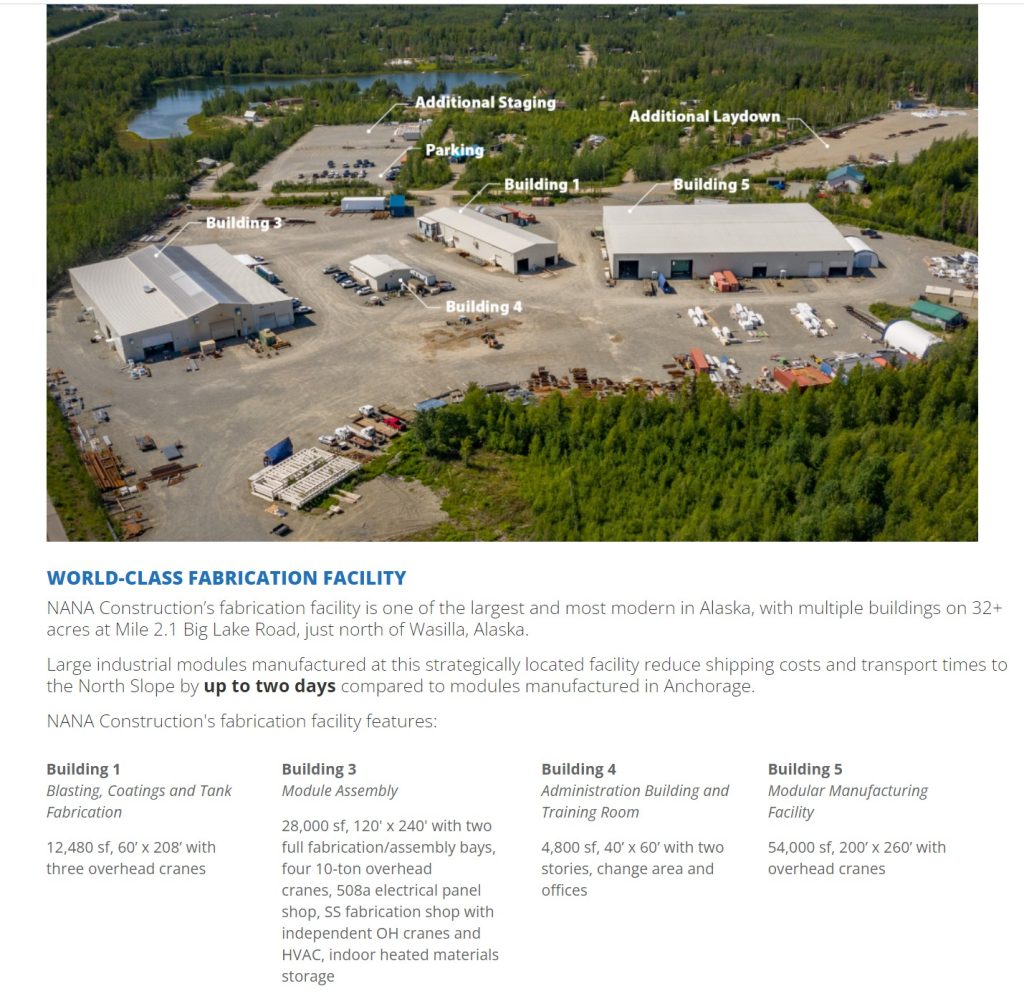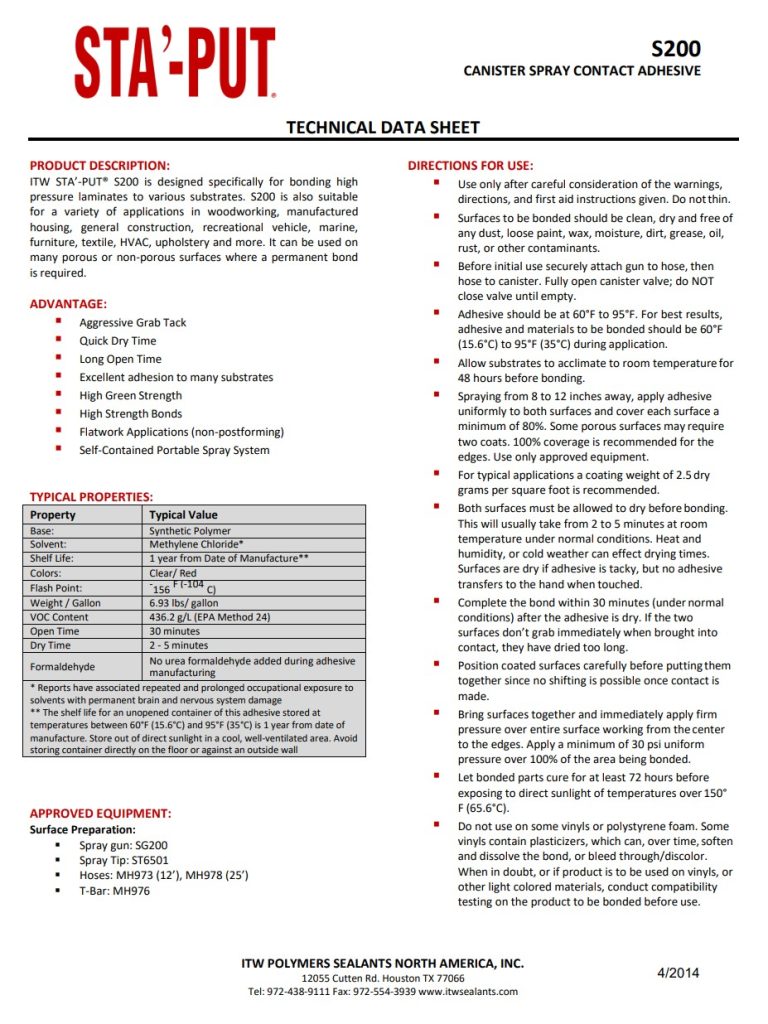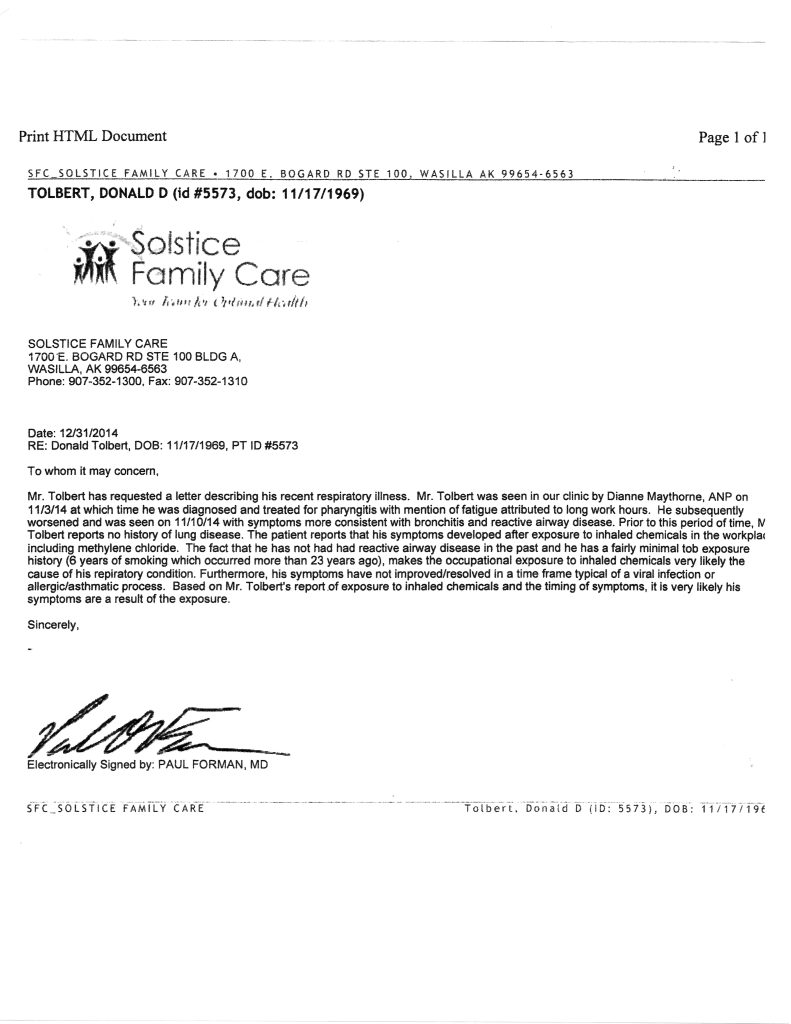He Says this Employer turned his life upside down…

In 2021 the NANA Corporation—owned by more than 15,000 Iñupiaq shareholders who live or have roots in northwest Alaska—was named number three among the top 49 companies in Alaska, by Alaska Business Magazine.1
This for-profit Native Regional Corporation; formed under the Alaska Native Claims Settlement Act of 1971; has a lot going on, and when you have a lot of employees, sometimes bad things can happen.
In 2014, something bad happened with NANA Construction probationary employee, Don Tolbert, which continues to plague him today.

I applied for a welding position at NANA’s fabrication plant at Big Lake, explained Tolbert in an exclusive interview. I’m a certified welder with over 20 years experience. I applied to be a welder. They weren’t fully developed yet in that plant; that building was freshly started up by NANA—their welding positions weren’t ready yet—so they put me on carpentry. Because I have craftsman background I know how to build and if it’s aluminum, metal or wood, it doesn’t matter; I can do it!
From the NANA website:
NANA Construction is a full-service general contractor that provides core services to the mining and oil and gas industries. NANA Construction’s fabrication facility in Big Lake is one of the largest and most modern in Alaska, equipped with the most advanced equipment and the most experienced personnel in the state.
NANA Construction’s workplace dynamic is familiar to this writer.
As a former ASEA/AFSCME Local 52 union Business Agent in Juneau for the largest union of state employees (GGU) during the mid- to late-1990s, I have seen how the Probationary Employee Got-Cha works; a capable person takes a job which is not what they applied for, but because they want to work they take the carrot-and-stick available. Soon after hire the carrot-and-stick turns into bait-and-switch.
Then the probationary employee takes the fall for a management screw-up.
No strikes, you’re out anyway.
This all happened in 2014, and today, Tolbert is a basket case. He asked me to tell his story about the abuse he believes he received from NANA when he was exposed to deadly chemicals—that can cause brain damage—as a probationary employee. As I asked questions, he settled down. We spoke on the record, which I will make available to any attorney who wants to help him with his now longstanding claim.


We were building modular living homes for people who work on the North Slope—oil workers, continued Tolbert. I wanted to work on the Slope, but this is the closest I could get. I was very excited to get this position to support my family. I was tasked with running a pneumatic hammer, building walls using 2 x 4 and 2 x 6 construction material.
Tolbert continued: We worked at long tables, a crew of four per table, where we would set up the material and fabricate each panel. Then we would stand them up, fly them over to a trailer to be manufactured into mods, to put on a skid. They would transport them from Big Lake up north. A floor foreman answered to a supervisor who was in an upper office.
They told us that Alaska State law says they can work an employee six weeks, 12 hours a day until giving a break. That’s what everybody was shooting for—a six week stretch. I was at four and a half weeks—doing my job, getting the hustle—keeping up with the young ones. I was learning and they were getting ready to hand me blueprints to run my own table.
…when methylene chloride happened.

The painters building went down—a malfunction in the building where chemical based spray adhesive was applied to fiberglass reinforced chipboard panels, a process done by two people, continued Tolbert. Management decided to sneak that process into the fabrication shop after their ventilator/air purifying system went down—into the big house where we were making these walls—they stuck it off on the side of the building. They put two guys on the task, with two canisters of spray adhesive, using AES 200 Sta’ Put. The main base is methylene chloride.2

This stuff is dangerous, declared Tolbert. They didn’t give us proper PPE to do this—no respirators, no hazmat, no material data. They just brought it in, and they put two people on it—new hires—coating chipboard sheets so they could be used for wet areas like kitchens and bathrooms. We had to go through two bunks of wood—a bunk of wood is what you see on the side of the train going down the road. I don’t know exactly the count of chipboard or PDI sheets. It wasn’t plywood.

How did this exposure effect you?
Within three to four hours after I came home from doing the task, I started getting really sick, said Tolbert. I woke up with a burning sensation in my throat. My eyes were burning and I had high fever. I was vomiting, I had diarrhea. I couldn’t even get off my couch—I was looking into my wife’s eyes. I couldn’t get up for at least six to eight hours.
Tolbert was in rehabilitation three months.

Tolbert has taken extensive notes of what happened.
Here’s how it worked: They took two men at a time, said Tolbert. This all happened within a 24 hour period—it was blatant. The first two men got sick and they blamed it on cold, flu, and pneumonia. Sent them home; “don’t worry about it.” They got sick four or five hours into the task, so they just called in two more men.
Alfred Sneed and I were the last two of the six to do this job—we actually survived and made it to the end of that damn task, said Tolbert, I don’t know how.
Speculation on why NANA Construction would take such a risk
They were under pressure because their contract was going south, Tolbert said. We heard they were not getting these mod orders fulfilled for Grand Isle Shipyard, a company based in Louisiana.3 They were behind schedule. So, because they had a malfunction in their paint shop, they brought that dangerous coating process over. They didn’t bring the painting work over, just the chipboard coating process; chipboard has to have a covering on it, or it’ll go to pieces. They were coating these chip boards to be able to use them in places like bathrooms and kitchens. So instead of doing it where they should have been doing it, they did this chickenshit deal where a bunch of us were exposed to dangerous adhesives—without proper PPE.
The Covid Pandemic has made us all aware of the importance of PPE.
We brought our concerns to the Foremen, said Tolbert. He said “Get back to work don’t worry. We’re gonna have you fitted for respirators,” but nothing came of it. The second time we went to them the Supervisor came downstairs and was standing next to the foreman: He said “You guys just need to get back to work, this stuff isn’t that bad.” Then the Safety Officer comes downstairs and says: “You fellas need to get back to work. Don’t concern yourself with this. If you have issues, we’ll have you fitted for respirators.”
By now I’m the only one asking questions.
Five other people were exposed, according to Tolbert, but he was the one who filed complaints with Occupational Safety & Health Administration.
So you toughed it out?
Yes, NANA had me go through their doctors first.
They fired you?
When I went back to work, it wasn’t even 24 hours before they put me on what they called a Work Stop. After that, I didn’t even get a proper termination letter or anything from these people. I didn’t even know I lost my job. They blatantly sickened me, and then I was fired because I was a liability, inquiring about the chemicals we were using.
In another case of workplace exposure to dangerous chemicals, five workers sued Baker Hughes, Inc.; Baker Petrolite Corporation; Baker Hughes Oilfield Services, Inc.; and an individual, John Clyde Willis, for an incident in 2014 in Kenai during construction of a new chemical transfer facility. Workers allegedly were repeatedly exposed to toxic chemical releases for the existing chemical transfer facility. Willis personally faced up to 20 years in prison and up to a $250,000 fine. Baker Hughes was indicted with 25 felony counts, including 10 counts of first-degree assault. The companies faced up to $2.5 million in fines for the most serious charges if convicted.4
This was Gov. Walker’s Attorney General and THREE Dunleavey Administration Attorney Generals ago.
Likely an undisclosed settlement has been reached, since the case has been closed. The Dunleavy Attorney General wouldn’t dare hold a Native Regional Corporation subsidy company accountable. Tolbert has been kicked to the curb for an event not his fault that will impact him for the rest of his life.5
- Alaska Business Magazine [↩]
- Methylene Chloride (CH2Cl2) is a colorless liquid that can harm the eyes, skin, liver, and heart. Exposure can cause drowsiness, dizziness, numbness and tingling limbs, and nausea. It may cause cancer. Severe exposure can cause loss of consciousness and death. [↩]
- Grand Isle Shipyard [↩]
- Grand Jury Indicts Baker Hughes [↩]
- Christopher Lovely, et al. ve Baker Hughes, Inc., et al. [↩]

Big Corporate!! Big Money!!
They dont care about Employees only Time and Money.!!
Don has been my friend since we were in school, he isn’t lying about what happened these big corporate entities use people and throw them away, he spent months in the hospital and rehab this crap damn near killed him, why can’t OSHA do something they can shut other places down for violations but when a company blatantly puts a “NEW HIRES” life at risk nothing to see here, they need to be held accountable
Thank you for posting on this story. If more people knew perhaps more people would take action, but unfortunately too many are here only for their Alaska Adventure. Happy to report a Brian Holmes, who was in Alaska with the military, has received reconsideration from VA for harm done to him.